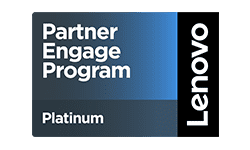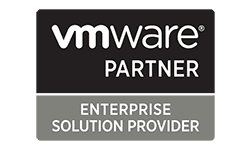Transforming Digital Asset Management with OpenAI: How to Achieve Efficiency and Growth
Revolutionizing Digital Asset Management through OpenAI Document Models
Joe Priff, Lead Solutions Architect
6 Min Read

Businesses of all sizes struggle to efficiently manage and retrieve their digital assets. This can include a PDF, Word Document, image, video and more. If a business cannot quickly locate vital documents, then their customers will face the same struggle.
A common solution to this pain point is a Digital Asset Management (DAM) System. However, there is often hesitation in adopting this type of solution due to concerns like:
- Implementing a DAM system takes too long.
- DAM systems cost too much money.
- The project would tie up too many resources.
These are all valid concerns which can be addressed by incorporating OpenAI into a DAM system implementation process. Integrating OpenAI document models into DAM systems redefines content management for businesses.
How exactly? With Metadata. By integrating OpenAI technologies into DAM systems, the process of metadata creation can be significantly streamlined. Metadata serves as a vital tool for organizing and contextualizing digital assets, but manual tagging can be time consuming and resource intensive.
With OpenAI’s capabilities fused together with automation tools like Power Automate, DAM systems can automate the tagging and categorization of metadata, resulting in considerable time and cost savings for businesses. This not only expedites the implementation process but also ensures more accurate and precise metadata, enhancing the overall efficiency and effectiveness of digital asset management. Ultimately empowering businesses to efficiently manage their assets and extract invaluable insights from their content repository, unlocking new avenues for innovation and growth in the digital realm.
Key Categories of Vital Metadata
Metadata is the lifeblood of an organization’s digital assets because without things like category metadata, retrieving and using digital assets becomes difficult (or impossible, at scale). Efficient and precise categorizing of digital assets with well-defined metadata can be the difference between a good and great asset management system. Key categories of metadata include:
- Descriptive Metadata: This includes titles, descriptions, and keywords. This kind of metadata is especially useful for search.
- Technical Metadata: This includes file formats, resolutions, and sizes. These metadata types are essential for compatibility and optimization.
- Structural Metadata: This refers to hierarchical information, which enables content organization and relationships.
- Administrative Metadata: Refers to ownership, rights, and creation dates, items critical to staying compliant and accountable.
This list isn’t exhaustive, but they should help any business start with a foundation to structure their digital assets.
Creating AI Models within the Power Platform
Microsoft’s Power Platform makes adopting this approach more manageable. Power Platform has intuitive interfaces and tools, such as Power Automate and Power Apps. With the Power Automate AI Builder, anyone with minimal coding experience can develop and deploy AI models for metadata extraction.
For example, using the platform’s user-friendly interface and guided steps, companies can train models by supplying sample assets such as sell sheets, product specification documents, or warranty information along with their associated metadata. Through AI Builder, organizations can efficiently fine-tune models, essential for accurate metadata extraction.
Training the Model on Asset Metadata
Step one is to train an AI model using a selection of assets, by identifying and linking metadata to each asset. Take your time with this step because it impacts the model’s accuracy and establishes patterns crucial for the automated extraction of metadata from a wide range of assets.
Give the model samples of assets in various formats and the AI model will improve at recognizing patterns and attributes associated with each metadata category. This training phase significantly enhances the model’s capability to extract metadata accurately from various assets.
Leveraging Power Automate for Seamless Integration
Next, implement a feedback loop. Once the trained model has extracted metadata in the Power Automate Flow, create an iterative process that captures insights or corrections provided by humans as the assets are processed. Users can highlight discrepancies or suggest improvements for uncertainties captured in the loop, essential for refining the AI model’s algorithms. This process fosters a continuous learning cycle, improving accuracy and adaptability over time.
This integration streamlines the process, significantly reducing manual intervention and operational overhead. As assets flow through the Power Automate workflow, the system intelligently identifies and extracts relevant metadata, ensuring a consistent and efficient approach to handling assets.
Imagine this process as an assembly line. Digital assets are the raw materials, information is the product, and Power Automate is the assembly.
- The system uses AI builder as a precision tool, extracting metadata from the assets.
- Introduce a feedback loop, akin to deploying a team of quality control experts to monitor and improve the process.
- As digital products progress through, users identify and flag any irregularities or uncertainties.
- Flagged issues become critical feedback for recalibrating the process to achieve greater precision.
This system not only reduces manual efforts and operational complexities but also ensures a consistent and efficient approach to handling the digital production line, fostering a learning environment that refines its accuracy with each iteration.
Utilizing DAM System APIs for Streamlined Integration
Most modern DAM systems, such as Sitecore Content Hub, offer REST APIs, providing a gateway for automated ingestion of assets and associated metadata. Integrating with these APIs streamlines the upload process, allowing assets to be frictionlessly incorporated into the DAM system with precisely categorized metadata.
The API-driven integration between the AI-powered Flow for extracting metadata and the DAM, allows for a continuous transfer of assets and associated metadata. Additionally, this process is fully automated and can continue to exist within the existing day-to-day business operations as new assets get created or added to the DAM. Keeping a process like this in place offers continuity in the metadata extraction and removes the need for training new employees on what metadata is essential during the transformation process.
Advantages of the Integrated Approach
- Enhanced Efficiency: Automation streamlines the process, reducing manual intervention and enhancing operational efficiency.
- Accuracy and Consistency: Leveraging AI models ensures consistent and accurate extraction of metadata across diverse assets, minimizing errors.
- Scalability: The system’s adaptability allows seamless scaling to handle a growing volume and variety of assets.
- Improved Search and Retrieval: Rich metadata enriches the searchability, enabling swift retrieval and utilization of assets.
Conclusion
Companies often find their digital assets dispersed across multiple platforms. The objective is to unify these scattered assets within a cohesive, organized Digital Asset Management (DAM) system. Power Automate is instrumental in achieving this by either accessing all these diverse locations directly or enabling their consolidation into a centralized location like OneDrive or SharePoint. It facilitates the process of channeling these disparate assets into a singular workflow, using RESTful requests to effectively integrate digital assets and their associated metadata into the designated DAM environment. This approach not only makes consolidation more efficient but also introduces a level of clarity and organization to the management of digital assets.
The integration of AI-powered metadata extraction with DAM systems empowers a new era of content management, catalyzing efficiency, and strategic utilization of organizational assets. As businesses navigate the evolving digital landscape, leveraging AI models for metadata extraction stands as a transformative step towards optimizing content management and achieving operational excellence.
Considering implementing a DAM system? Look for companies like GDC who have experience in migrations and are well versed in Open AI technologies. Partnering with GDC means you have a partner who is focused and aligned on your business’s goals, who has the expertise to lead your business through the intricacies of a migration.
About Joe Priff
Joe Priff is a Solutions Architect and Sitecore Lead on GDC’s Application Services team. He has extensive background in .NET development and website architecture. He’s passionate about creating and optimizing our clients’ digital opportunities through barious solutions with Sitecore, Content Hub, and more to deliver a holistic omnichannel experience. Priff graduated from Shippensburg University with a degree in Management Information Systems.
GDC empowers businesses to increase employee productivity, maximize investments and improve operational efficiencies. With experienced and certified professionals, we deliver services in the areas of application development, data center, 24/7 multilingual service desk, managed IT services, desktop lifecycle management, project management, and business process consulting. Learn more.




